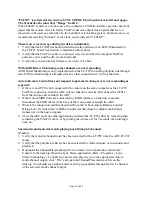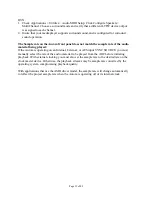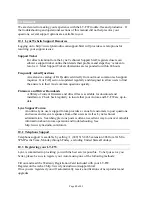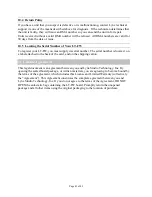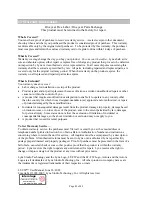
available. For this reason, there will be no difference within ASIO between modes that
present the same I/O as multi-channel or stereo devices. For Instance Mode “1M: Analog 1-8
Multichannel” and Mode “1S: Analog 1-8 Stereo” will appear identically within an ASIO
application.
8.2 Application Setup
The LT-FW was designed to provide maximum compatibility with the most popular audio
and multimedia applications that use the Windows MME, DirectSound, ASIO and OS X
Core Audio driver standards. It is crucial that the applications are set up correctly for optimal
operation.
8.2.1 Windows
The Windows drivers for the LT-FW support two dominant driver models, WDM (which
support both MME and DirectSound) and ASIO. WDM was developed by Microsoft and is
used most typically by media playback applications, such as Windows Media Player, iTunes,
Quicktime Player, WinDVD, PowerDVD, etc.
ASIO was developed by Steinberg, and was designed to address the low-latency and high
channel count needs of Pro Audio and Music Production. ASIO is an option for Audio
Production applications such as Cubase/Nuendo, Sonar, Samplitude/Sequoia, Audition, etc.
These applications may also support MME or DirectSound, but when the option exists, we
recommend using ASIO for the best performance.
8.2.1.1 Controlling Latency by Changing the Buffer Size
Latency in an audio interface can be defined as the time required to process a sample
requested from an application to the interface’s audio output. A number of factors determine
the achievable latency performance of an Aurora/LT-FW system: processor speed, operating
system, sample rate, number of utilized record or play channels, system efficiency, etc.
Latency can be manipulated by changing the size of the buffers used to transfer data to and
from the LT-FW. The Aurora Remote Control Software provides access to buffer settings
from the LT-FW > Control Panel screen, which can define individual buffer and Stream
buffer sizes for WDM and ASIO.
Page 30 of 42























